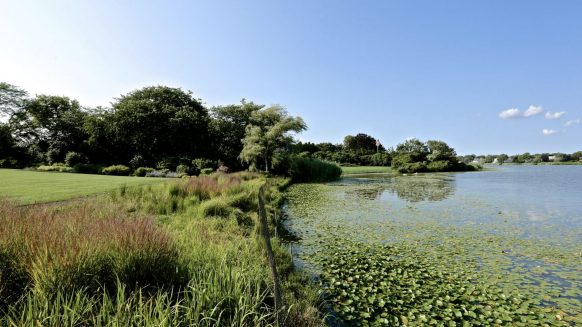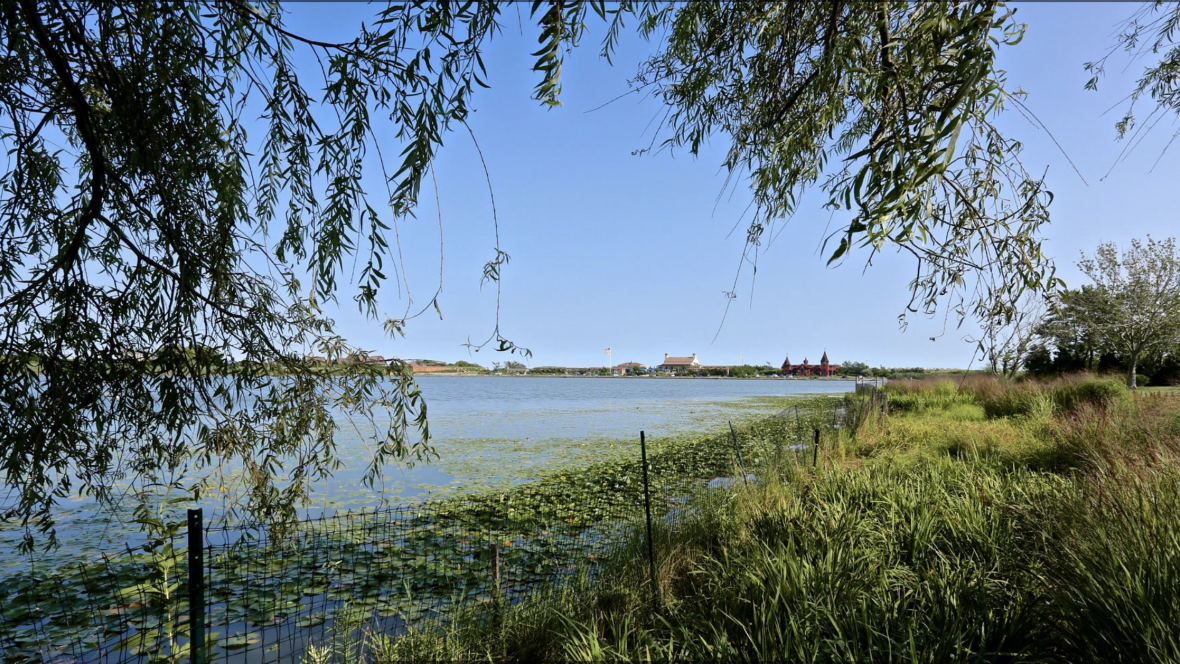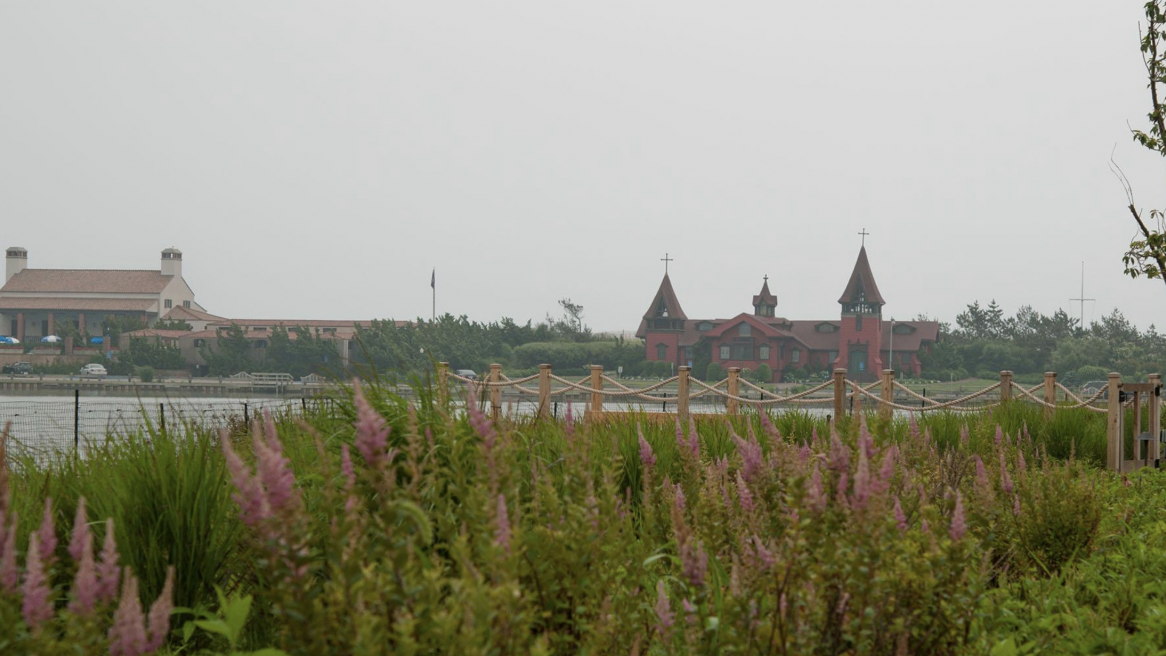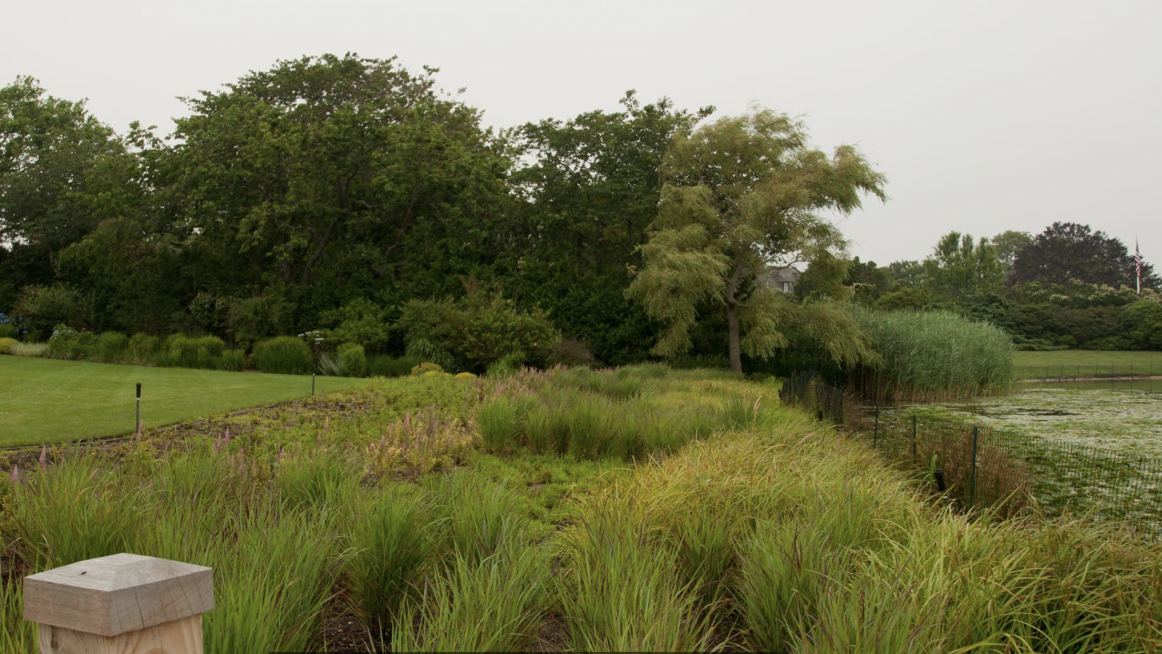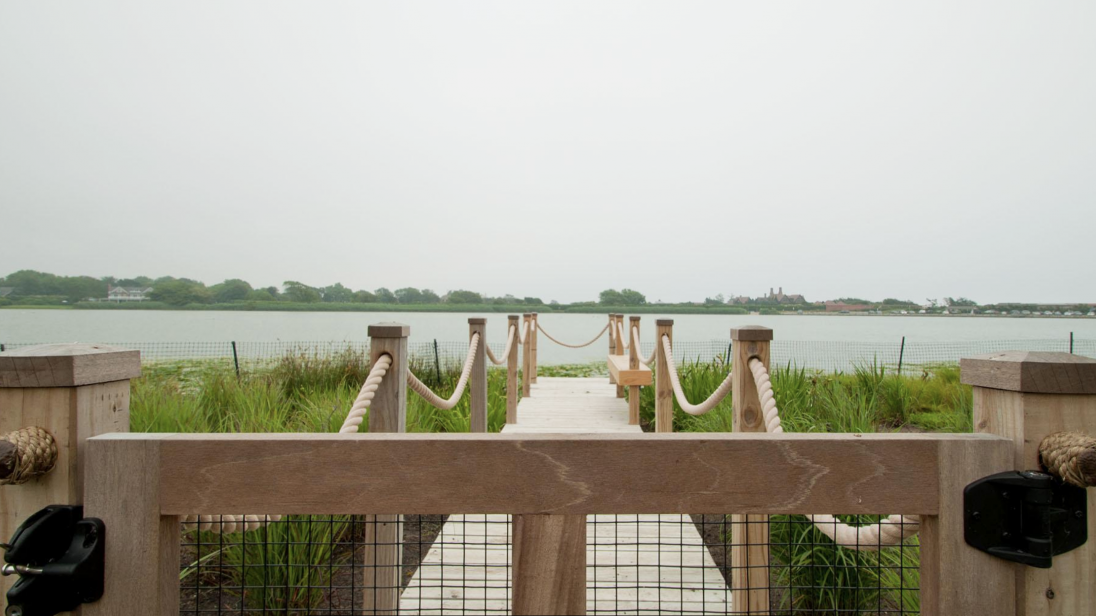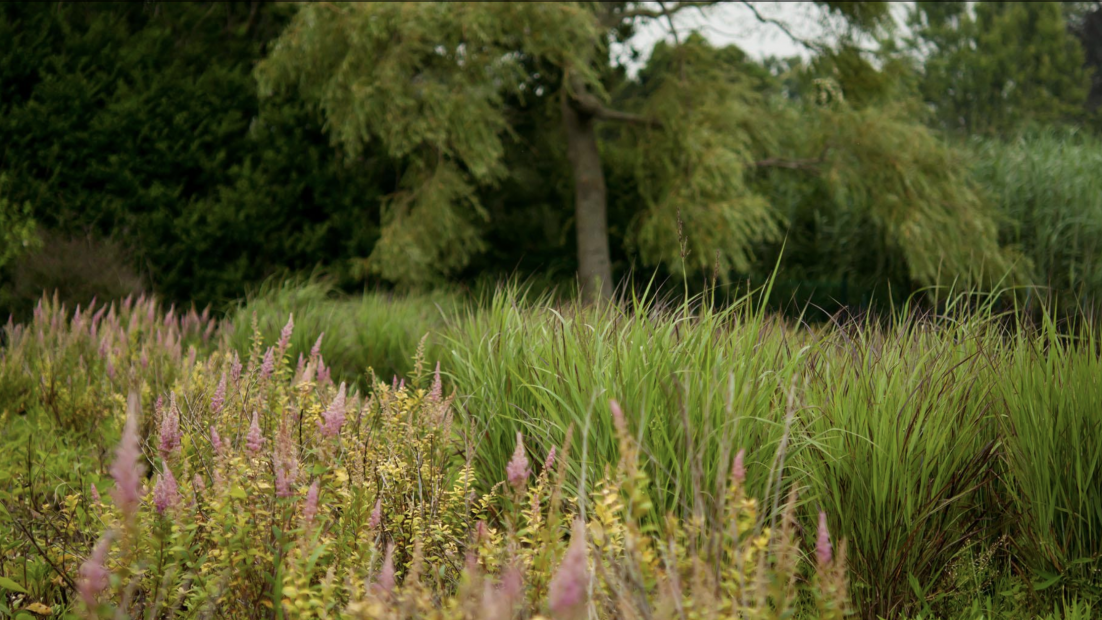Change Fertilizer Habits
Fertilizer contains nitrogen, phosphorus and other chemicals that cause the harmful algal blooms (HABs) and other challenges our local bodies of water face. Consider switching from synthetic fertilizer to organic, slow-release fertilizer and only use it when needed. Additionally, avoid fertilizing in the spring as it encourages weeds, soil diseases and rapid, poor growth. Much of the soil in the area is very fertile and actually requires little or no fertilizer to still produce beautiful green lawns. Something as little as letting leaves decompose in flower beds in the fall can help fertilize soil enough each year.
Plant a Buffer
Vegetative buffers are a protective barrier of plants between a landscape and a water body that help improve water quality by filtering nutrients, sediment and pollutants before they reach the water. This can be done with a wide variety of native plants that require no fertilizer, provide wildlife habitats for birds, butterflies and even fish, and do not need additional water once settled. These gardens feature many different types of plants from wetland plants closest to the water and plants that do not necessarily need wet soil conditions to survive farthest from the water. We recommend planting buffers up to 50 feet away from the shoreline to help protect and restore our local bodies of water.
For more information, check out Slow the Flow: Vegetation Buffers and Why They are Important, written by our friend Sara Davison at Friends of Georgica Pond.
Plant a Native Plant Garden
All people, whether they live next to or near the water, can make a large difference by choosing to grow native plants. After the initial setup, native plants do not require maintenance beyond the removal of aggressive weedy plants. In return, they offer beautiful flowers that return year after year as well as habitats for birds and pollinators. Try out a small garden and see what you think!
Read this New York Times article from the In the Garden section about native plants and how best to utilize them for your garden: “Why Use Native Plants”
Look through this list of plants native to Southampton Town: southamptontownny.gov/2103/Native-Deer-TolerantResistant-Plant-List
Change Watering Habits
Water deeply, but infrequently, one to two times a week beginning in mid-June and once a week in the fall. Do not set an irrigation clock that automatically waters after it rains. Frequent watering increases mosquitos, fungus, and excessive nutrient runoff.
Additional Guidelines for a Water Friendly Garden
Edwina von Gal, founder of a Perfect Earth Project, discussed the benefits of a toxic-free landscape in an event hosted by the LAC. She wrote down what products homeowners and landscapers can use season by season to achieve a healthy lawn in a step by step primer. Listen to her talk and read through how to start and utilize best practices. Learn about how there are many nature based solutions for many common problems.

